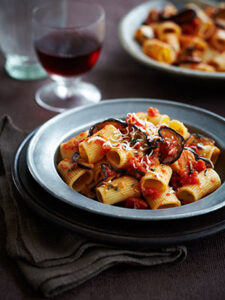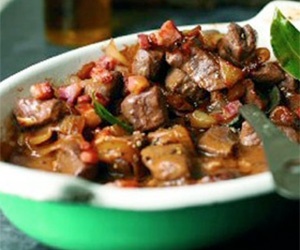
This Cream of peppers recipe is not for the more common soup, but is a wonderfully tasty sauce and its creamy consistency makes it ideal with the penne: with some (but crucially not all) of the sauce finding its way into each penna.Cooking PastaMy golden rule for cooking pasta properly is to use 1 litre/2 pints of water for every 100g/3½ oz of pasta! Don’t bother adding ANY oil (it has better uses) to prevent pasta from sticking: it is the quantity of water and regular stirring that will ensure pasta doesn’t stick.This Cream of peppers recipe was written by Sara Danesin – UK MasterChef Finalist 2011 – for Garofalo pasta, and we are most grateful to have her send it to Kitchen Geekery too.
Prep Time 10 minutes mins
Cook Time 30 minutes mins
Total Time 45 minutes mins
Course Side Dish
Cuisine Mediterranean
Servings 2
Ingredients
- 1 yellow bell pepper (diced)
- 1 red bell pepper (diced)
- 1 shallot (finely chopped)
- 1 tbsp oregano
- 100 g parmigiano (grated)
- 4 tbsp extra virgin olive oil
- 400 g garofalo penne rigate
Instructions
- Place oil and shallots in a frying pan and sauté gently making sure shallots don’t brown (as they become bitter).
- Add the peppers and sauté until very tender; if the mix becomes too dry add some boiling water (a glass will do).
- Season to taste (please remember that extra salt will go in with the parmigiano, so don’t overdo it).
- Place the sauce in a food processor and blitz to a cream, then add the oregano.
- To cook the pasta, use a large capacity pan and bring to the boil 4 litres/1 gallon of water, add salt and then the pasta.
- Place the sauce on the drained pasta, stir well and add plenty of grated parmigiano. You may wish to add a splash of extra virgin olive oil.
- Serve at once and enjoy this most flavour-some, light and inexpensive dish.
If you love Italian food, you might find our article about Italian Food Terms useful.





